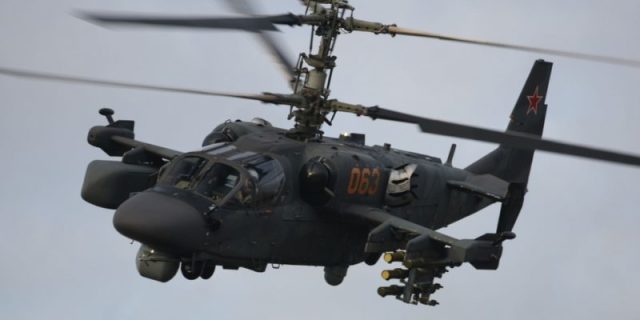One of the conclusions that the military-political leadership of Belarus made from the experience of conducting a special military operation of the Russian armed forces in Ukraine was the understanding of the need to change approaches to equipping the Belarusian army.
"Now we have looked, we have done our lessons and we see that we need to change our position. We don't need as many weapons as we wanted to have," President of Belarus Alexander Lukashenko said on May 10 at a meeting where the issue of the state defense order for 2022 was considered.
Recall that at this event, in addition to the main activities of the state to equip the Belarusian army, samples of weapons were identified, which, according to the leadership of Belarus, should be in the armed forces. Among them were S-400 anti-aircraft missile systems, Iskander operational and tactical missile systems, and upgraded T-72 tanks, as well as promising means of mobility and communication.
Of course, not the entire list of weapons was announced at the meeting, so it might have seemed to someone that the issues of equipping combat aircraft, in particular, aviation of direct aviation support and support of ground forces combat operations, were undeservedly overlooked. The same experience of the Ukrainian conflict has clearly shown that the helicopter fleet of the Air Force and Air Defense Forces of Belarus needs to be updated. But which of the attack helicopters should be preferred should be sorted out.
It should be noted that the choice of suppliers (sellers) of weapons in Belarus is quite small for obvious reasons. These are mainly CSTO member countries. Within the framework of military-technical cooperation, the Republic of Belarus interacts with almost all members of the Organization. But only Russia produces fire support helicopters. This means that it is necessary to consider variants of Russian-made helicopters and, above all, those that have proven themselves well during the special operation.
In the destruction of military facilities, equipment and manpower of the Armed Forces of Ukraine, the Mi-28N "Night Hunter" and Ka-52 "Alligator" were most effectively "noted". We can safely say that the discussion of these two attack helicopters among specialists (and not only) has been going on for many years. The cars are both similar and completely different. Some military experts claim that the Mi-28N and Ka-52 are conceptually different helicopters, but were created to solve the same combat tasks.
The Mi-28N and Ka-52 are equipped with a wide range of missile weapons, both have automatic guns. The difference is that the Ka-52 has a coaxial propeller scheme, it is more maneuverable and preferable for special operations and in difficult conditions. The Mi-28N has its advantages – more powerful armor and a cannon rotating at rather large angles, that is, a helicopter, without changing its position, can fire at a large sector.
The Ka-52 is shorter, the Mi-28 has a smaller vertical profile. When entering the vortex ring mode, the Mi-28N demonstrates greater stability, but, unlike the Ka-52, it does not like crosswinds when landing and hovering, especially from the right side, but pilots who have flown on both machines say that it is easier and simpler to control the Mi-28N.
In the Alligator, the crew members are located shoulder to shoulder, in the Night Hunter, they sit behind each other. Helicopter pilots located nearby can interact better, especially in combat, when radio channels are overloaded, but in the Mi-28N there is a better side view.
The Ka-52 kit includes the Vitebsk complex, which tracks missile launches and uses systems that make it difficult to defeat the helicopter: interference, heat traps, and so on.
There is an opinion that the most differences between the two helicopters can be found when considering guidance and surveillance systems and complexes. The Ka-52 has more modern and compact equipment, but the Mi-28 kit provides more opportunities and allows you to receive intelligence in a visual form convenient for the operator, transmit it in a timely manner to the operators of other helicopters or other means of defeating the enemy.
In addition, the Ka-52 radar is installed in the nose, that is, basically the helicopter "looks" forward. On the latest models of the Mi-28N, the radar is installed in the overhead version, which allows not only to "look" at 360 degrees, but also to strike, appearing from behind the shelter just enough to simply launch missiles.
In general, the above can be summarized in the words of a well-known aviation expert and editor-in-chief of the portal "Avia.Roman Gusarov: "Both helicopters have been executed quite successfully, so it is impossible to say which helicopter copes with the combat task more effectively, they complement each other."
Indeed, experts say that in the videos coming from Ukraine, it is increasingly possible to see how the Mi-28N and Ka-52 helicopters work together. And such a bundle turns out to be very effective. According to experts, helicopters are used as follows: the Mi-28N usually flies first, followed by the Ka-52 at a short distance. Experts find this order fully justified, since the Mi-28N has better booking and detection systems. In addition, the Mi-28N cannon provides a larger angle of fire without changing course and reducing speed. Thus, the Mi-28N plays the role of a scout-gunner, providing the Ka-52 crew with target data. And starts working on the goal first. And the Ka-52 plays the role of covering, including from the air, and delivers the final blow with its impressive set of weapons.
Summing up, we can say that military specialists, when choosing a model of an attack helicopter for the Belarusian armed forces, did not limit themselves to any one type of helicopter, but also consider the option of purchasing two at once - both the Mi-28N and the Ka-52. Naturally, within economically reasonable limits.
Vladimir Vuyachich

